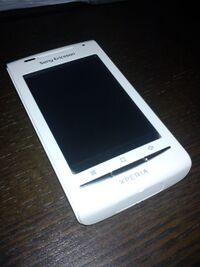Sony Ericsson Xperia X8 (semc-shakira): Difference between revisions
Appearance
m N/A |
m - |
||
| Line 33: | Line 33: | ||
| status_calls = <!-- Talking to other people over the cellular network. --> | | status_calls = <!-- Talking to other people over the cellular network. --> | ||
| status = <!-- Text displayed in the "not booting" table on the Devices page , e.g "kernel compiles, doesn't boot" --> | | status = <!-- Text displayed in the "not booting" table on the Devices page , e.g "kernel compiles, doesn't boot" --> | ||
| status_otg = | | status_otg = - | ||
| status_nfc = | | status_nfc = - | ||
| status_usba = <!-- Full-sized USB-A port works (Usually applicable to SBCs and laptops) --> | | status_usba = <!-- Full-sized USB-A port works (Usually applicable to SBCs and laptops) --> | ||
| status_hdmidp = <!-- Video and audio output with HDMI or DisplayPort works --> | | status_hdmidp = <!-- Video and audio output with HDMI or DisplayPort works --> | ||
Revision as of 14:32, 20 October 2022
| WARNING: This device is not recommended for future use with postmarketOS due to its armhf architecture. Alpine Linux (the distribution that postmarketOS extends) pmaports#599 has been considering dropping it. The processor of the device may support the armv7 architecture. If so, you can modify the device package and change the architecture accordingly. |
This device is marked as not booting.
 Sony Ericsson Xperia X8 White | |
| Manufacturer | Sony Ericsson |
|---|---|
| Name | Xperia X8 |
| Codename | semc-shakira |
| Released | 2010 |
| Hardware | |
| Chipset | Qualcomm MSM7227 Snapdragon S1 |
| CPU | 600 MHz ARM11 |
| GPU | Adreno 200 |
| Display | 480x320 TFT |
| Storage | 512 MB |
| Memory | 256 MB |
| Architecture | armhf |
| Software | |
| Original software | Android 1.6 on Linux 2.6.29 |
| postmarketOS | |
| Category | testing |
| Pre-built images | no |
Contributors
- CHANGE_ME (put your username here!)
Users owning this device
- Konradybcio (Notes: It needs binary tools to package its ancient 2.6 kernel into a proprietary .sin and then flashable .ftf formats)
- ULumia (Notes: Unlocked bootloader and touchscreen from Cypress)
How to enter flash mode
Hold down the "Back" button and connect to the PC via USB cable